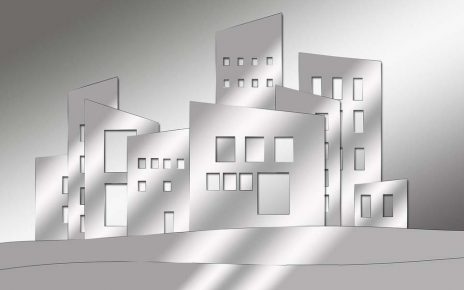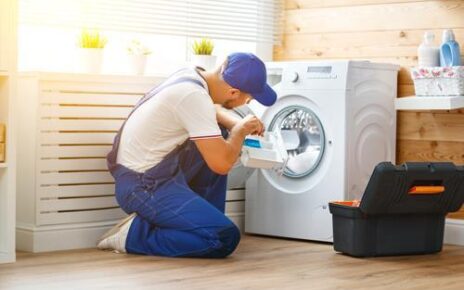Most people think of curb charm as roofing, siding, and surroundings, but new windows installation offers a great opportunity to upgrade your home however you like and resale value. Not forgetting, with practically 40 percent of central heating lost through windows and doors, quality window replacing with proper insulation ensures large savings on bills.
Another reason to Windows Replacement in East Pasadena is that today’s replacement windows also deliver large personal savings in maintenance costs and convenience, as newer windows don’t require the continuous upkeep of scraping, replacing putty and new paint.
New Windows CAN HELP YOU SAVE Money on BILLS
Screen salespeople make many promises about energy personal savings. How true are these claims? Good quality glass windows, installed properly, can produce substantial energy personal savings. Just how much you save is determined by the sort of window you select and the sort and condition of the home windows you are upgrading.
In the common home, 38 percent of the heat loss is through doors and windows. In case your home has drafty single-pane house windows or single-pane light weight aluminum sliders, the heat loss from glass windows may be around 50 percent. The poorer the performance of your old house windows, a lot more dramatic the personal savings and the sooner energy savings together will cover the price of your new screen investment.
Window Openings
Many people don’t recognize that you don’t have to displace your old windows with new ones that have the same opening style.
Air leakage around house windows is a big factor in the window’s overall thermal performance. In conditions of air leakage, the best home window is fixed; that is, can’t available or close. There simply aren’t any gaps and openings for air to find its way through.
While useless for ventilation or for escaping a fire, fixed glass windows may be an outstanding option in certain locations. Nearly nearly as good are “casements” or awning-style windows that crank wide open and closed. Because the seals are compressed slightly when the home window is closed, it is difficult for air leaks to build up.
The least effective starting style is sliders. Many people go for sliders due to the fact that is what they’ve always got. There are many good sliders on the marketplace, nonetheless they have to rely more on other features, such as low-E coatings (see below) and more glazing layers, to provide top energy performance. Sliders, that have more joints and spaces, are also more susceptible to air leaks as the seals years and get worn or lose their resiliency.
Window Frames
The window frame is the main element to the long-term structural integrity of the window. In case the framework warps or breaks, the window’s performance can undergo enormously. And, just as much heat can be lost through the framework as through the glazed (a glass) portion of the window.
Both wood and vinyl frames succeed, whereas a material frame doesn’t often contain heat well. However, material frames are generally stronger, which becomes one factor in commercial applications or with extra-large home windows.
For normal residential glass windows, most homeowners choose vinyl or solid wood. With vinyl house windows, avoid casings that are presented as well as screws because they have a tendency to loosen over time. Instead, look for “welded” seams, where either heat or chemicals have been used to fuse the joints.
In conditions of energy financial savings, wood and vinyl are equivalent. Some people prefer the appearance of lumber, though it lacks the maintenance-free aspect of vinyl.
Window Glazing
Most older windows are made with an individual layer of a glass. Typically the most popular alternative windows are created with two panes of goblet. Some individuals opt for triple-pane home windows to maximize the improvement in thermal performance.
Added glass layers improve performance in two ways.
First, enclosed air and other gases are effective insulators. A lot more enclosed places the screen has, the less heat can break free. Each layer of wine glass also provides more floors for low-E coatings. Some home windows use a vinyl film suspended between two tiers of glass to attain a triple-pane effect at a lower cost.
Low-E coatings are almost unseen finishes that are usually put on glass. While they let through almost all of the light humans can easily see, they block a lot of the heat-intensive infrared light, thus bettering the window’s insulating value. Some windows hold the low-E covering over a film suspended between two tiers of wine glass, creating the effect of the triple-glazed product.
While plain air is a good insulator, some complete gases, like argon, krypton and skin tightening and, are better still. The gas or mixture of gases influences the window’s overall thermal performance.
Is it time to displace your window cup? Review replacement goblet for windows prices before calling in a professional.
NFRC Rating
Luckily for us, the National Fenestration Rating Council is rolling out a rating system that considers almost every one of the above factors.
One aspect the NFRC score system doesn’t take into account, however, is the long-term sturdiness of the merchandise since it rates the home window only when it is new.
The NFRC gives each window a U-factor rating. The U-factor is the inverse of the greater familiar R-factor used in attic insulation. So a U-factor of .5 equals an R-factor of 2. The low the U-factor the better it is.
When comparing house windows, check for the NFRC label to check out the U-factor. The first quantity following the words “U-factor” is the score that’s appropriate for residential purposes. It’ll be proclaimed “AA” or “Residential.”
The U-factor marked “BB” or “Non-Residential” is ideal for commercial window applications. Use the U-factor score to make important comparisons. Be skeptical of a windowpane seller who won’t provide this amount.
Purchasing the very best Window for YOUR HOUSE
Obviously, you need to get price comparisons to make a decision. Take into account that a good part of your cost is assembly, so it is practical to leverage those costs by installing a better screen. Below are a few guidelines:
Buy a double-pane screen with a minimal U-factor when:
You don’t be prepared to live in the house long.
You have less expensive gas or oil heat.
You expect energy prices to stay stable or drop.
You expect to have significantly more income in 10-15 years.
Buy a triple-pane screen with a very low U-factor when:
You anticipate to are in the house for 10 years or more.
You have significantly more expensive electric heat.
You anticipate energy prices to go up sharply.
You expect to obtain less income in 10-15 years.
Window Durability
The NFRC ratings don’t address window toughness directly. If the home windows warp, leak or loosen as time passes, their U-factor ratings will probably plummet. Your very best learning resource for choosing a durable, problem-free windowpane is to count on the advice of an established installer. He or she will be interested in your long-term satisfaction and can quickly steer you free from glass windows that don’t hold up well.
You can also inspect the window before buying. Look for a good fit between parts. Slide a small business cards between any slidable sashes and the framework. The credit card should slide, but there must be some resistance.
Low U-factor ratings and durable construction are both dependant on focus on details. Generally, the better ranked home windows will be better made as well.



